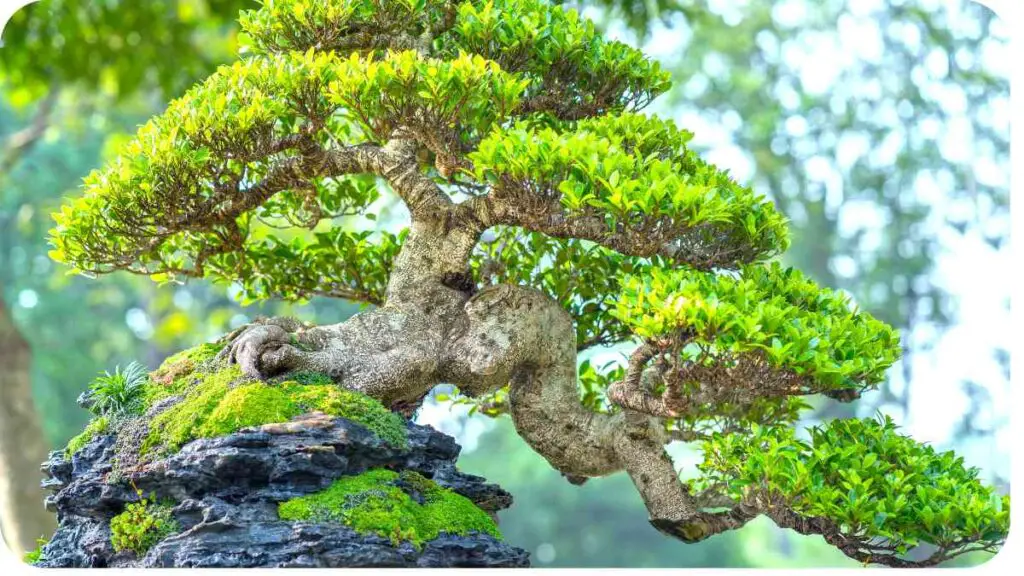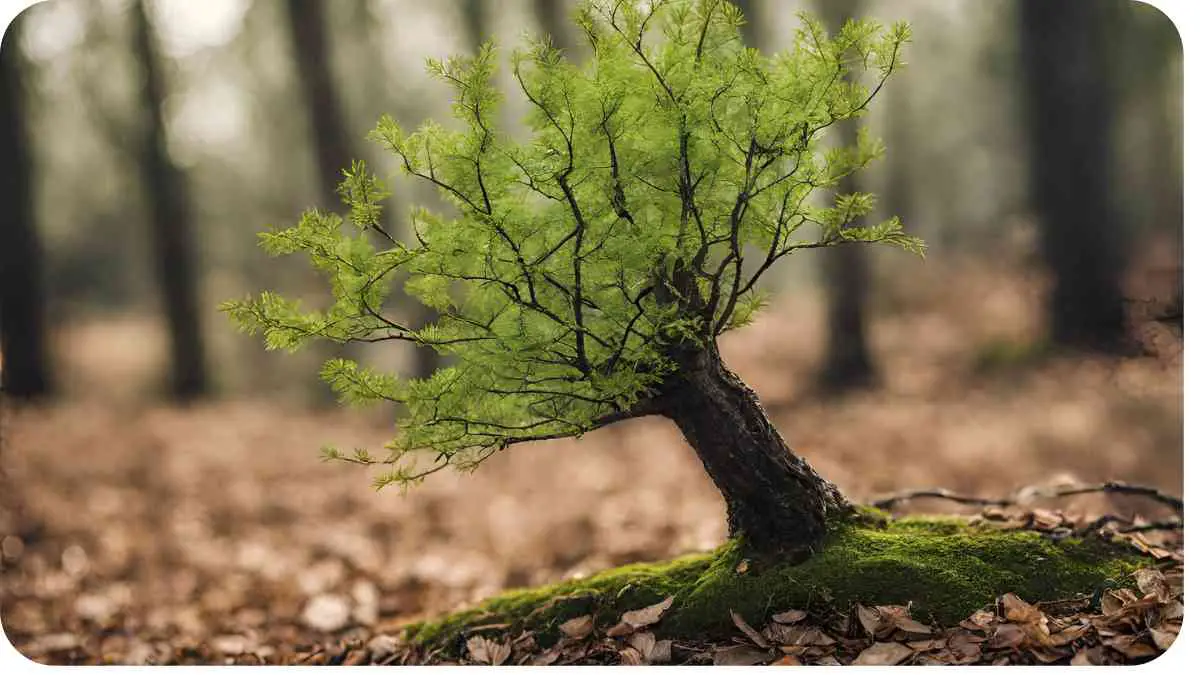Have you ever marveled at the intricate branching patterns of trees? Have you wondered how trees determine when it’s time to start branching out as they grow? Understanding the mechanisms behind tree branching can unravel the mysteries of tree growth and development.
In this article, we’ll explore the fascinating journey of trees as they decide when and where to sprout branches, delving into the science behind this natural phenomenon.
| Takeaways |
|---|
| Understanding hormonal signaling and environmental cues in tree branching. |
| Importance of proper pruning techniques in shaping tree architecture. |
| Appreciating the role of nutrient availability in supporting healthy tree growth. |
| Recognizing the diversity of branching patterns among different tree species. |
| Considering environmental factors’ influence on tree branching and growth habits. |
Understanding Tree Growth

Trees undergo various growth phases throughout their lifespan, each governed by intricate biological processes. From seed germination to maturity, trees follow a meticulously orchestrated growth trajectory influenced by both internal and external factors.
Pruning is an art that promotes growth and vitality in trees. Through careful pruning techniques, gardeners can unlock the growth-boosting power of trees, encouraging healthier development and stronger branches.” Unlocking growth-boosting power of pruning is key.
Growth Phases of Trees
Trees progress through distinct growth stages, including seed germination, seedling establishment, vegetative growth, reproductive growth, and senescence. During vegetative growth, trees allocate resources to height and girth expansion, laying the foundation for branching and canopy development.
Factors Affecting Growth
Several factors influence the growth patterns of trees, such as environmental conditions, nutrient availability, genetic predisposition, and hormonal signaling. Understanding how these factors interact can provide insights into the branching behavior of trees.
Signals for Branching Out
The decision to initiate branching is guided by a combination of hormonal signaling and environmental cues. Trees employ sophisticated mechanisms to sense their surroundings and respond accordingly.
Hormonal Signaling
Plant hormones, such as auxin, cytokinins, and gibberellins, play pivotal roles in regulating branching. Auxin, produced in the apical meristem, inhibits lateral bud outgrowth along the main stem while promoting apical dominance. However, as auxin levels decrease due to environmental cues or hormonal changes, lateral buds are released from apical dominance, leading to branching.
Pruning is an art that promotes growth and vitality in trees. Through careful pruning techniques, gardeners can unlock the growth-boosting power of trees, encouraging healthier development and stronger branches.” Unlocking growth-boosting power of pruning is key.
Environmental Cues
External stimuli, such as light intensity, photoperiod, temperature, and mechanical stress, also influence branching patterns. Phototropism, the bending of plant parts towards light, can trigger branching in response to uneven light distribution. Similarly, wind-induced mechanical stress can stimulate branching as trees adapt to withstand external forces.
Role of Apical Meristem
The apical meristem, located at the tips of shoots and roots, serves as the primary site of growth and differentiation in trees. As the apical meristem produces auxin, it exerts apical dominance by inhibiting the growth of lateral buds. However, when apical dominance is relaxed, lateral buds are free to develop into branches, contributing to the tree’s overall architecture.
Genetic Factors
Genetic variation among tree species dictates their branching patterns and growth habits. Some species exhibit determinate growth, where branching occurs at predetermined intervals, while others display indeterminate growth, with branching influenced by environmental factors and genetic predisposition.
Nutrient Availability
Nutrients play a crucial role in supporting tree growth and development, including branching initiation and expansion. Adequate nutrient availability ensures optimal physiological functioning, allowing trees to allocate resources towards branching and canopy development.
Understanding the formation of tree limbs is akin to unraveling nature’s mysteries. The branching brilliance of trees showcases their adaptive strategies, revealing insights into their growth patterns and structural integrity.” Branching brilliance illuminates nature’s wonders.
Importance of Nutrients
Essential nutrients, such as nitrogen, phosphorus, potassium, and calcium, are required in varying quantities to support tree growth. Nitrogen, in particular, is essential for promoting vegetative growth and branching, while phosphorus aids in root development and nutrient uptake.
Nutrient Transport in Trees
Trees employ specialized vascular tissues, namely xylem and phloem, to transport water, minerals, and sugars throughout the plant. Xylem vessels facilitate the upward movement of water and nutrients from the roots to the shoots, while phloem transports sugars produced during photosynthesis to various parts of the tree, including growing branches.
Bonsai trees captivate with their centuries-old longevity in small pots. Understanding how bonsai trees are cultivated unveils the meticulous care and techniques required to sustain these miniature wonders for generations to come.” Cultivated bonsai trees are enduring marvels.
Pruning and Branching
Pruning plays a crucial role in shaping tree architecture and influencing branching patterns. By selectively removing branches, arborists can promote desired growth characteristics and enhance the overall health and aesthetics of trees.
Pruning Techniques
Arborists utilize various pruning techniques, such as crown thinning, crown raising, and crown reduction, to achieve specific objectives. Crown thinning involves selectively removing interior branches to improve light penetration and air circulation within the canopy. Crown raising entails elevating the lower branches to enhance clearance beneath the tree, while crown reduction aims to reduce the overall size of the canopy.
Trimming plants isn’t just about aesthetics—it’s a strategy for strength. When plants are pruned, they respond by redirecting energy to new growth, resulting in stronger stems, branches, and overall plant resilience.” Trimming plants strengthens their resolve.
Effects on Branching
Pruning can either stimulate or inhibit branching, depending on the extent and timing of the cuts. Severe pruning may induce a surge in lateral bud outgrowth as the tree compensates for lost foliage, resulting in denser branching. Conversely, improper pruning techniques or excessive branch removal can weaken the tree’s structure and impede future growth.
Common Tree Species and Branching Patterns

Different tree species exhibit unique branching patterns and growth habits influenced by their genetic makeup and environmental conditions. Let’s explore the branching characteristics of some common tree species:
Oak Trees
Oak trees typically display a sturdy, spreading growth habit characterized by strong lateral branches and a broad canopy. Their branching patterns vary depending on species and environmental factors, with some oaks exhibiting a more open, irregular form, while others possess a symmetrical, rounded crown.
Pine Trees
Pine trees are known for their distinctive conical shape and whorled branching pattern. Whorls of branches radiate around the main stem, giving pine trees their characteristic symmetry and density. Pruning pine trees requires careful consideration to maintain their natural form and prevent excessive branching.
The art of bonsai reveals the secrets of miniaturizing mighty maples. Bonsai basics demystify the process, showcasing how careful cultivation and pruning transform ordinary trees into miniature wonders of nature.” Bonsai basics create miniature marvels.
Maple Trees
Maple trees are renowned for their vibrant foliage and graceful branching structure. Their branches often form a symmetrical, dome-shaped crown adorned with lobed leaves that turn brilliant hues of red, orange, and yellow in autumn. Pruning maple trees can enhance their aesthetic appeal and promote healthy growth.
Conclusion
Understanding how trees determine when to start branching out provides valuable insights into their growth and development. By deciphering the intricate interplay of hormonal signaling, environmental cues, genetic factors, and nutrient availability, we gain a deeper appreciation for the remarkable resilience and adaptability of trees.
Whether admiring the majestic oak, the towering pine, or the colorful maple, we can marvel at the beauty of nature’s design and the timeless elegance of branching trees.
Further Reading
- Trav’s Trees – Will a Tree’s Branches Rise as it Grows?
- Explore the factors influencing the vertical growth of tree branches and how pruning practices can shape tree architecture.
- Penn State Extension – What Causes a Tree to Enter and Exit Dormancy?
- Learn about the physiological processes governing tree dormancy and the environmental cues triggering dormancy onset and cessation.
- The Grove 3D – How Trees Grow
- Dive into the mechanics of tree growth, from seed germination to branching patterns, and discover the role of environmental factors in shaping tree development.
FAQs
How do trees determine when to start branching out?
Trees rely on a combination of hormonal signaling, environmental cues, and genetic factors to initiate branching. Hormones like auxin play a crucial role in apical dominance and lateral bud outgrowth, while environmental stimuli such as light intensity and mechanical stress can influence branching patterns.
What role does pruning play in tree branching?
Pruning can influence tree branching by selectively removing branches to shape tree architecture and promote desired growth characteristics. Proper pruning techniques can enhance air circulation, light penetration, and overall tree health, while improper pruning may result in excessive branching or structural weaknesses.
Do different tree species exhibit distinct branching patterns?
Yes, different tree species display unique branching habits influenced by their genetic makeup, environmental conditions, and growth habits. For example, oak trees often have sturdy, spreading growth habits with strong lateral branches, while pine trees exhibit a distinctive conical shape with whorled branching patterns.
How does nutrient availability affect tree branching?
Nutrients are essential for supporting tree growth and development, including branching initiation and expansion. Adequate nutrient availability ensures optimal physiological functioning, allowing trees to allocate resources towards branching and canopy development. Imbalances in nutrient levels can affect branching patterns and overall tree health.
Can environmental factors impact tree branching?
Yes, environmental factors such as light intensity, photoperiod, temperature, and mechanical stress can influence tree branching patterns. Phototropism, the bending of plant parts towards light, can trigger branching in response to uneven light distribution, while wind-induced mechanical stress can stimulate branching as trees adapt to external forces.

For 15 years, Hellen James has worked in the gardening industry as an expert and landscape designer. During her career, she has worked for a variety of businesses that specialize in landscaping and gardening from small firms to large corporations.

